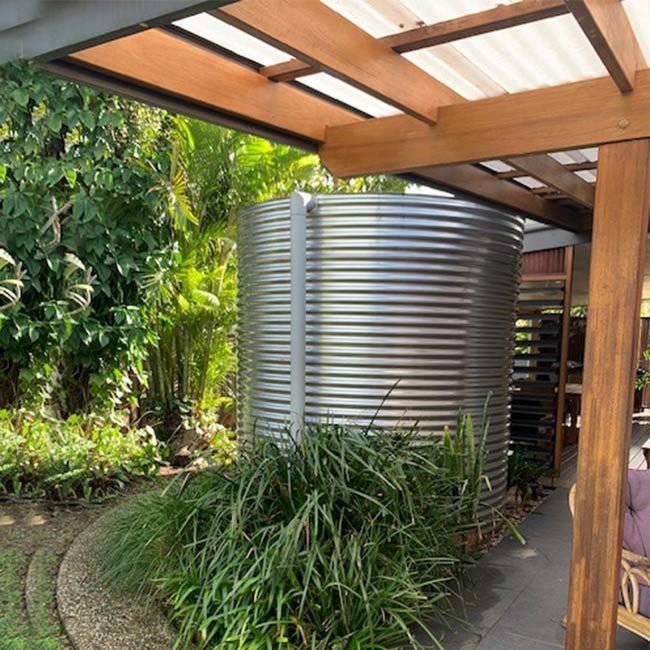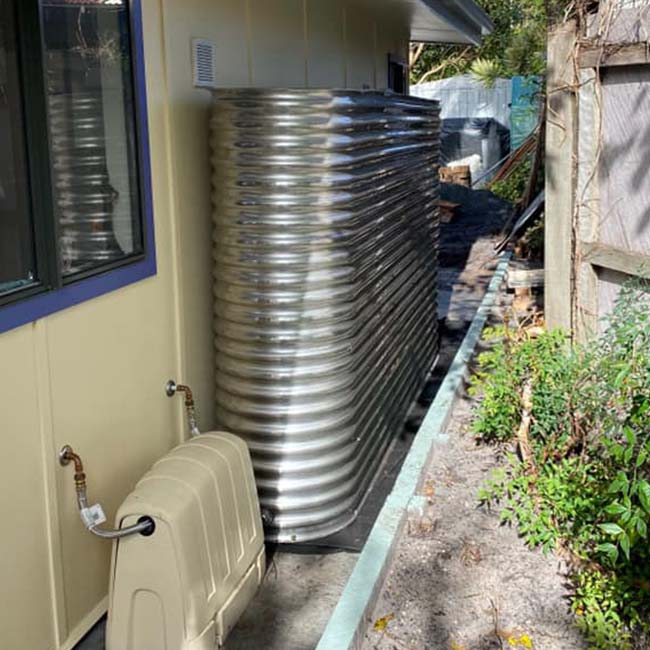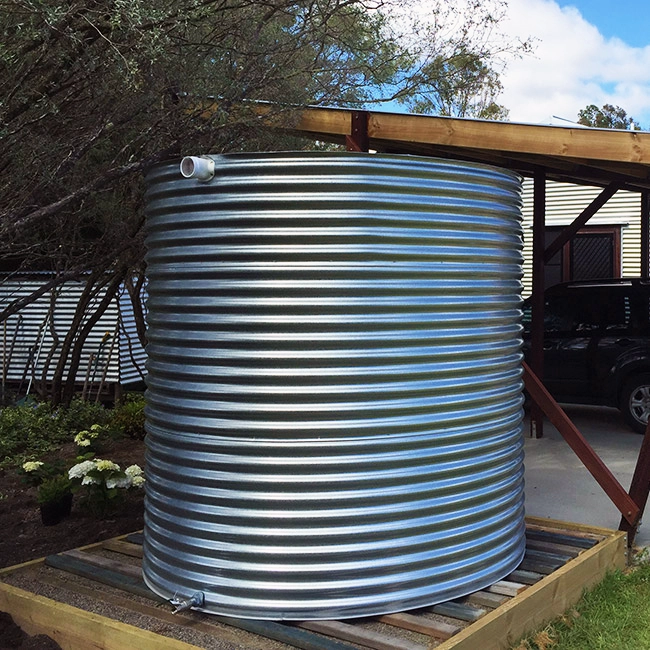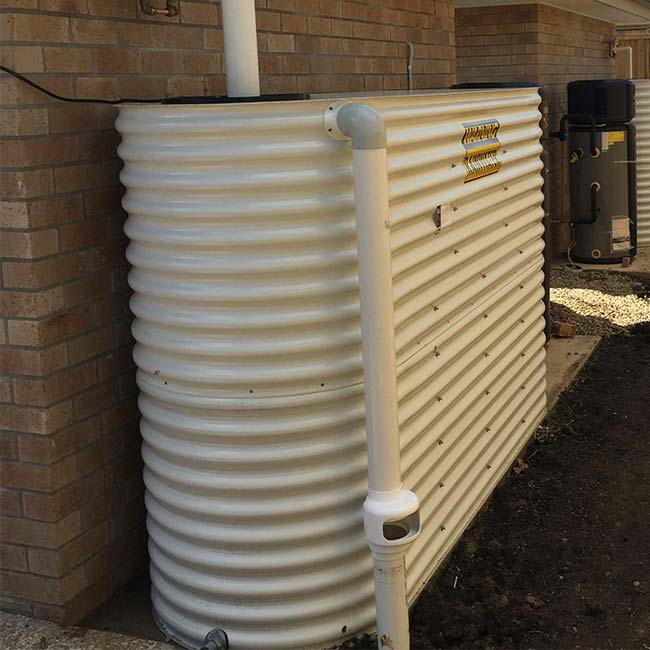How Are Water Tanks Eco Friendly?
Water tanks are eco-friendly because they store rainwater providing an alternative water supply for drinking, washing and outdoor use, using rainwater can also reduce water bills and take the pressure off mains water supplies.
Environmental Benefits of Rainwater Harvesting | Why Steel Water Tanks are a Great Choice
The Increasing Popularity of Sustainable Water Tanks
Luckily, rainwater is an abundant resource that’s free and easy to harvest; and as an added bonus, it also helps to reduce run-off and thus makes a big difference when it comes to flood management. So, what’s involved in setting up an eco-friendly rainwater harvesting system? Basically, you just need to select environmentally-friendly construction materials (keeping recyclability in mind), and install them the right way on your property. The main components involved in setting up a rainwater harvesting system are a water tank (with any necessary filtration/purification system), a catchment & drainage system (namely, your roof, gutter and a downpipe that sends the water into the tank), and (optionally) any plumbing required to reroute tank water into your house.
First, let’s talk materials. The majority of water tanks are made from materials that have a short lifetime, offer little UV-resistance and usually at their end of life cannot be recycled into anything else and will end up in landfill. Instead, go for the most eco-friendly choice: a steel water tank, which can have a lifespan of many decades, and possesses excellent recyclability potential.
Next up, the question of filtration and plumbing. If you’re only using your tank water to water your garden and lawn, it’s actually better not to filter out all those rich nutrients that are included in rainwater – tank water can easily get contaminated and not be safe for humans to drink, but it’s like manna from heaven for plants, who aren’t keen on the chlorination that comes with mains water in the first place!
If you want to be able to drink water from your tank, it’ll need to be filtered through an effective whole-house filtration system to ensure safety; however, it’s worth noting that the vast majority of the water you use in your home doesn’t need to be treated, because you’re using it to do things like wash your laundry, flush the toilet, etc. It may be worthwhile using mains water supply for drinking water, washing veggies, etc. and saving the tank water for purposes that don’t require treatment. In that case, you’ll need a licensed plumber to connect your water tank with your household plumbing; on the other hand, if you’re just using the tank water for outside purposes, you’ll need neither filtration nor household plumbing connection. Too easy!
With just a small upfront investment, you can enjoy the bounties of Mother Nature, significantly reduce your reliance on mains water, and contribute to Australia’s water future. Steel water tanks are truly an eco-friendly choice that will pay dividends environmentally for years to come, while reducing your water bills in the process!
Rainwater Harvesting & Sustainability
- Lessens the impact of wet and dry spells of weather
- Protects your local watershed
- Supports your garden to be more resilient
- Can be used to combat fires
- Restores your groundwater
- Reduces your carbon footprint
- Reduces the need for municipal water infrastructure
Aging water infrastructure is expensive to replace, maintain and implement. The more water that each person harvests, the less dependence there is on municipal water infrastructure. This also helps with drought-proofing the surrounding areas and having local water on hand to deal with bushfires.
Experts tell us that in the natural landscape, approximately 50% of storm water infiltrates into the ground, hydrating the soils and recharging groundwater, about 40% evaporates and 10% runs off. In contrast, in developed landscapes, 15% infiltrates the ground, 30% evaporates and 55% runs off all the hard surfaces such as roads and building materials.
When you install water tanks you reduce the impact of stormwater by holding the water on-site rather than letting it run off. This means you store the water and use it at another time when it is most needed and when it is more likely to infiltrate into the ground and make it more nutritious and productive.
Plants love rainwater above ‘town’ water because it is free of the salts, chemicals and minerals found in other water sources. The pH balance and nitrate delivery levels are perfect for uptake by your healthy plants. Keeping the world green has a direct impact on the whole water cycle, ecosystems.
When the rainwater infiltrates your ground, it is filtered naturally by the earth and is prevented from entering storm drains as polluted run-off. This also reduces the chances of heavy erosion occurring from the build up of fast, strong-flowing, run-off water.
Source: Water Services Association of Australia
Future climate change will impact on the water savings and performances and all these strategies and designed rainwater water systems but effective water harvesting and usage will significantly diminish the effects of this climate change and bring both direct and indirect benefits to the environment.
Why Steel Water Tanks are a Sustainable Choice
Investing in Water Tank(s) for homes and businesses makes a lot of sense, both from an environmental perspective and a pocket-friendly perspective: a well-made stainless steel water tank can be expected to last for 30 or more years, delivering your family up to 20% water conservation. To give you an idea of what the world freshwater crisis will look like three decades from now, it’s worth noting that the world population is predicted to grow to 10 billion by then, without any increase in the world’s available fresh water; at the same time, our climate will be hotter, and water restrictions will be more of a part of daily life.
So, what do you need to know about choosing a water tank? The construction materials are very important, particularly in terms of durability. The majority of water tanks are made from materials that will generally degrade over the years because of sun exposure, and if they’ve degraded to the point that they can no longer contain water, they’re no longer very recyclable either. They’ll usually last about 15 years. Concrete water tanks can last several decades, but are significantly more expensive. Fiberglass water tanks are a relatively rare sight, but their size isn’t very customisable. Unfortunately, they’re generally not recyclable, and tend to end up as landfill.
At Select Water Tanks, we manufacture stainless steel & colorbond steel water tanks that look great, last longer, heathier, bushfire resistant and recyclable. They come with a 30-year non-corrosion warrranty. We also offer colorbond water tanks, which are great value for money, and come with a 20-year non corrosion warranty and a 10-year manufacturer warranty. When you think about how much water you’ll save over 10 to 30 years, it’s exciting to think that this initial investment can make such a difference to Australia’s water future; and decades from now when they’ve reach their end-of-life, they can be recycled.
Learn more about Stainless Steel Water Tank Benefits
If you’re thinking of using the water that is stored in your tank as drinking water, ensure the construction materials are food-grade. Rainwater is safe to drink if it’s not contaminated and having a filtration system installed, it will take out any possible “nasties” for you.
Want to know more about water tanks, how much rainwater you can save and more? Please do contact us for expert advice, and service.






